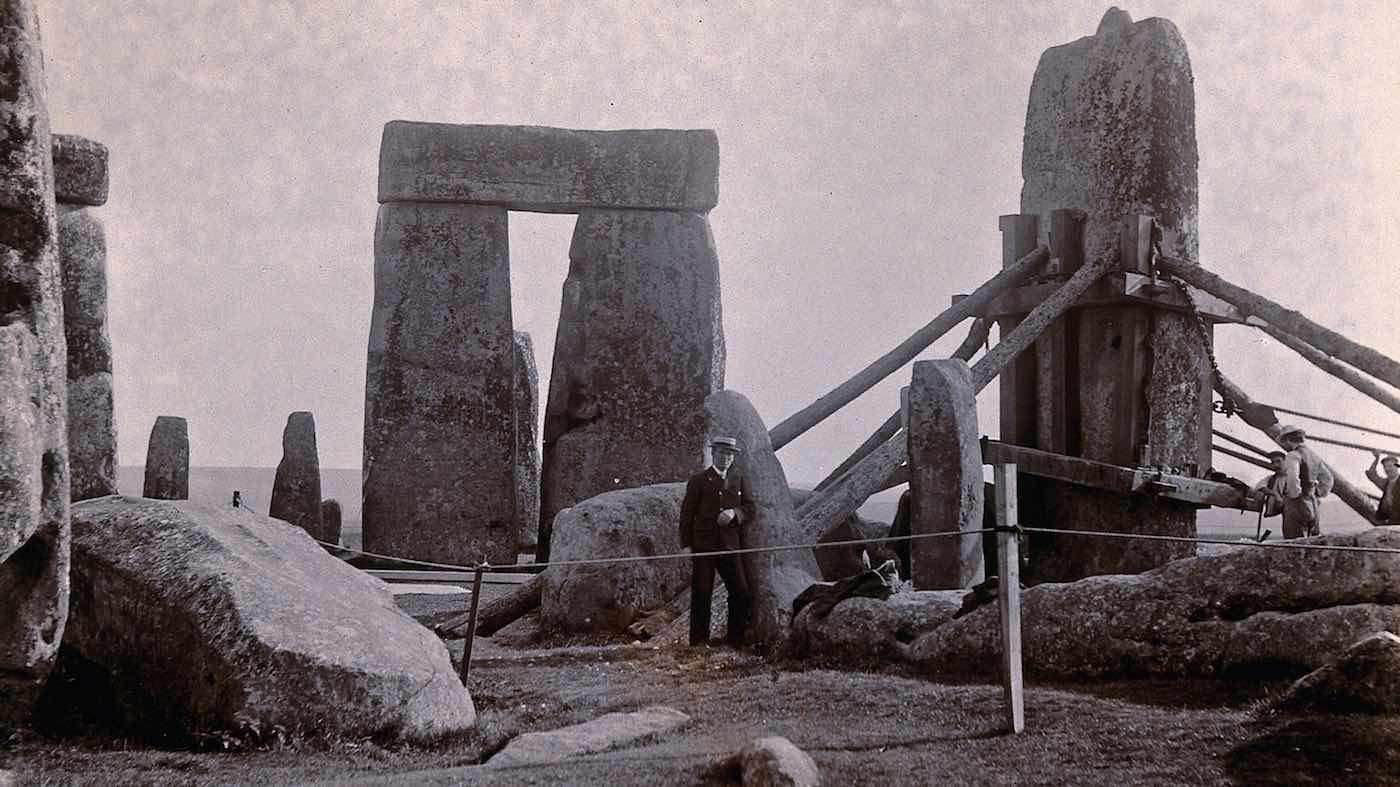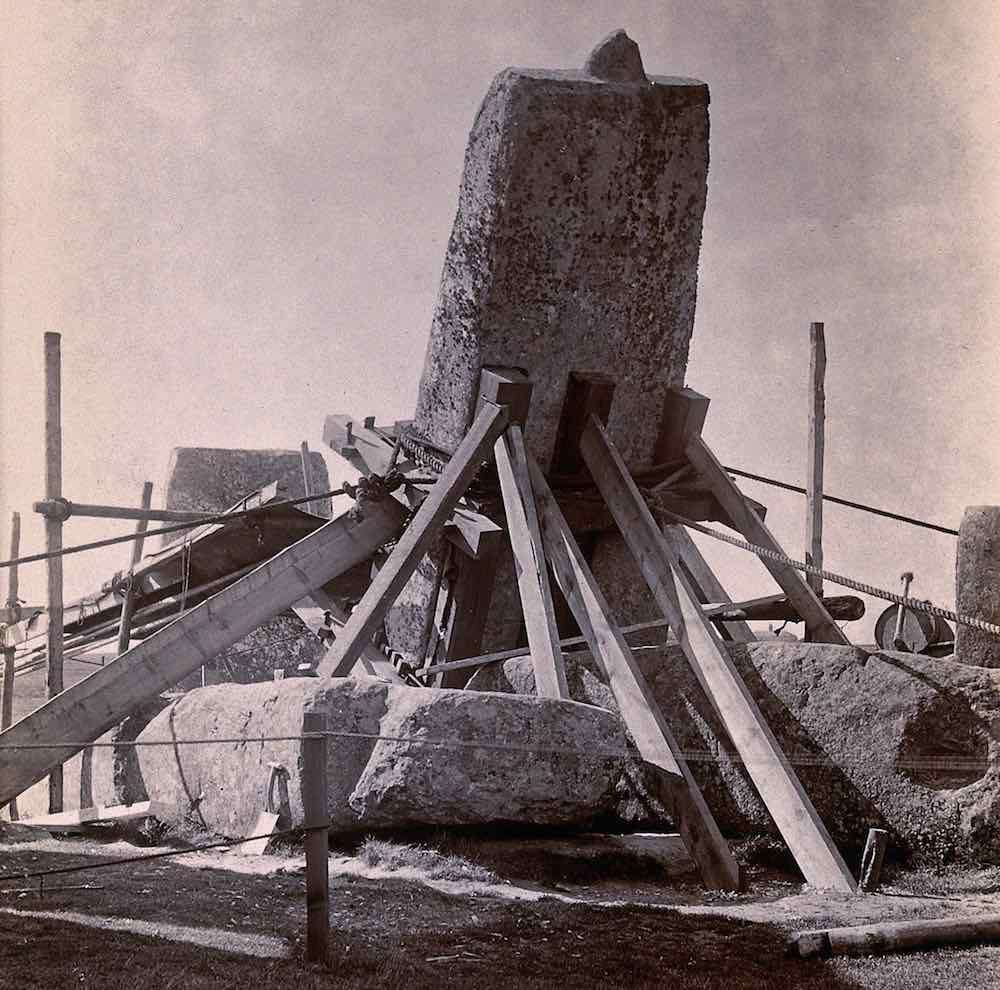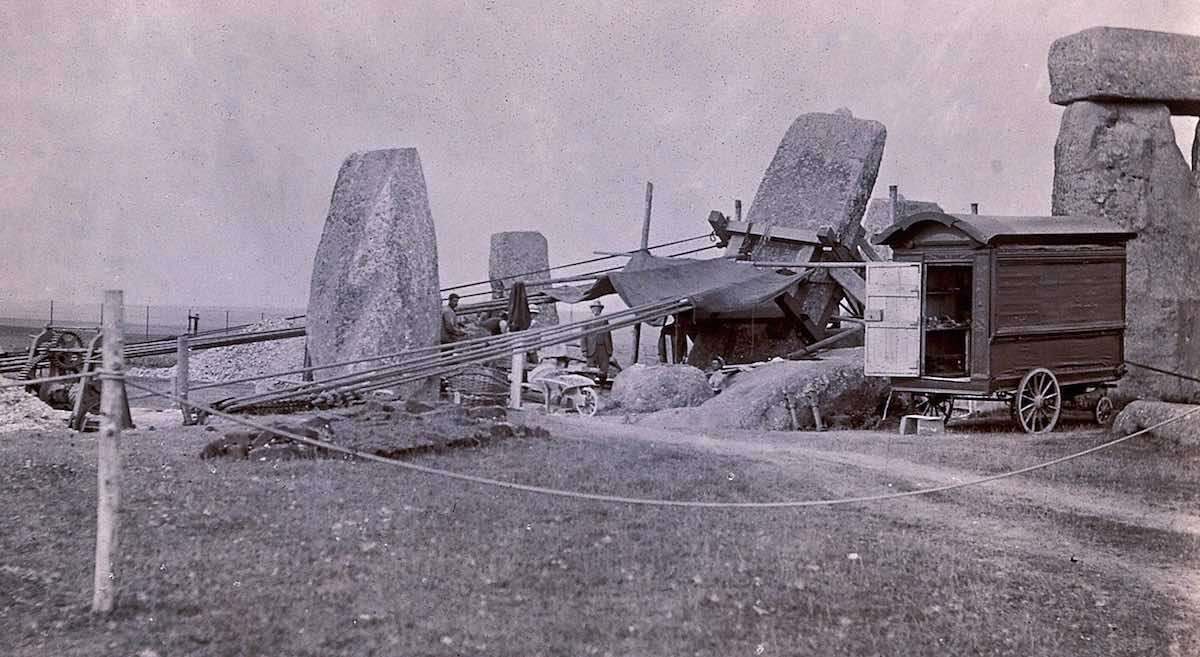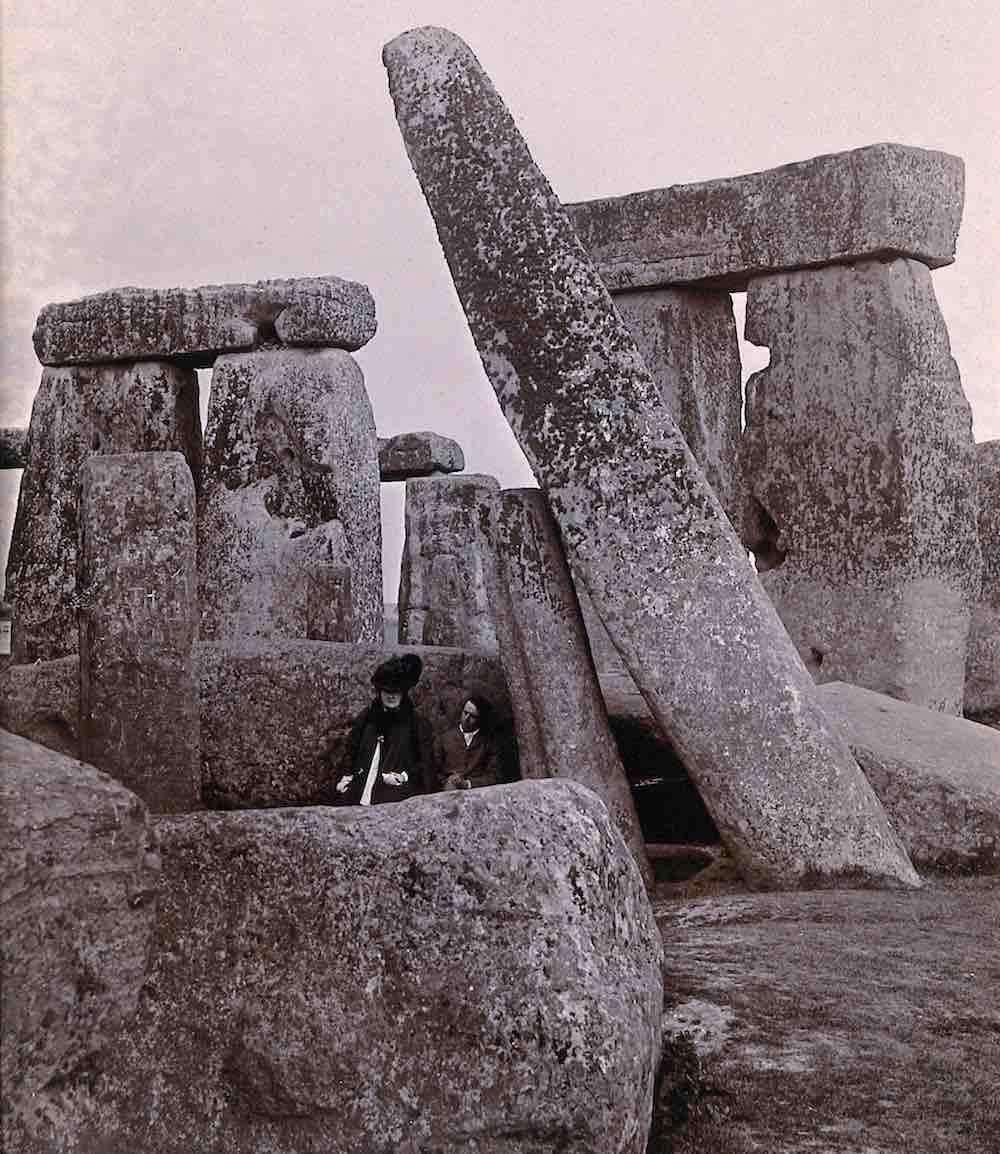Villagers Celebrate Reopening of Local Pub After 10 Years Raising 500K to Buy it-Halt its Tear-Down
Locals have spent a decade fighting to save The Rising Sun from being converted by property developers into new homes.

Photos are shedding light on the painstaking rebuilding of Stonehenge by Victorians in 1901—depicting engineers trying to move the tallest stones back into their intricate prehistoric positions.
Britain's most famous ancient monument on the Salisbury Plain in Wiltshire was built around 2500 BC, but after thousands of years some of the stones had fallen out of place.
Most guidebooks since the 1970s had made no mention of the facelift provided during the Victorian era—or other restorations completed around 1920, 1959, and 1964.
But the fascinating photos found by a researcher of history at the University of the West of England show the repairs in 1901.
The photo above shows stone #56, one of the tallest of them all, at 21 feet-6 inches.
It had fallen over, and work was undertaken to push it back up into its original position using pulleys and ropes.

A ‘bobble' called a tenon in the upright stones fit into holes made in the horizontal lintels.
It is believed that 14 of the stones were also set in concrete during these early renovations, and concealed under the turf—and only seven are in their original sockets.

English Heritage, which oversees Stonehenge, vowed 20 years ago to rewrite the official guidebooks to make sure the rebuilding is part of the story told to the one million visitors each year who come to marvel at the engineering prowess of our early ancestors.
"The work is a very important part of the history of Stonehenge and when people are told about it they are fascinated," said English Heritage senior archaeologist Dave Batchelor.

But, he believes that most people, above all, are interested in why it was built in the first place.
SHARE the Fascinating Photos With History-Lovers on Social Media…
Be the first to comment